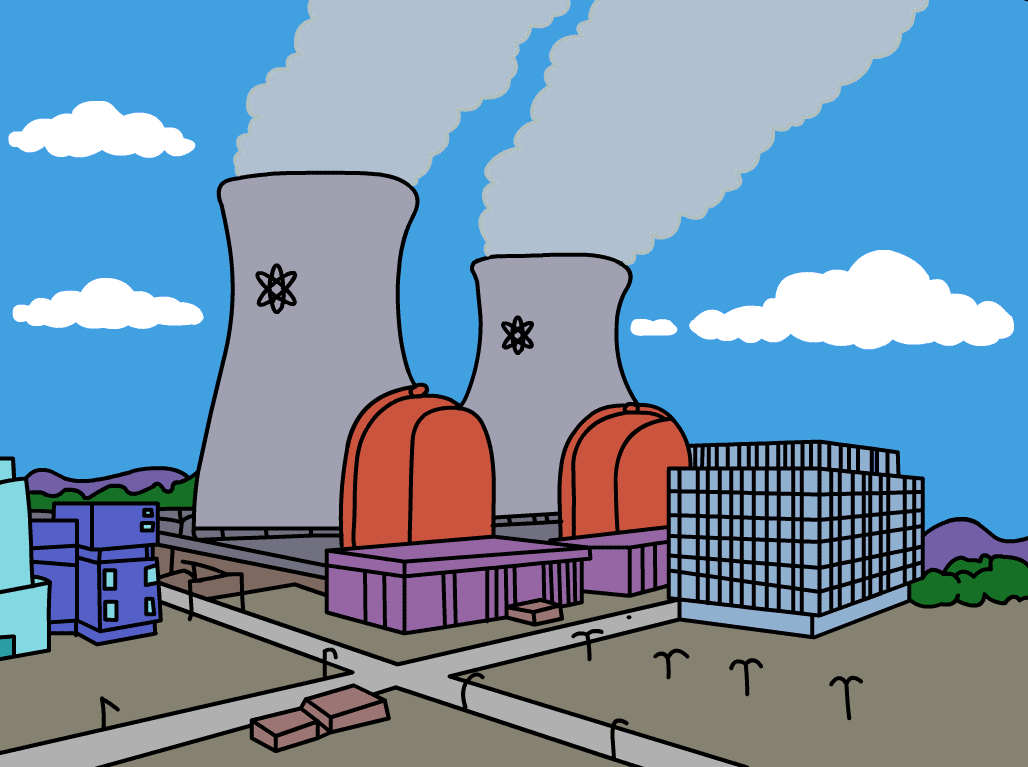Monticello’s not the only one!
January 18th, 2007

There’s more — there are other plants like Monticello, they could have the same problem of 35,000 pound pieces of the plant breaking loose and falling…
Where is that potassium iodide?
Monticello accident prompts alert to other nuclear plants
Four plants, in New York, New Jersey, Vermont and Massachusetts, are similar in age and design to the one idled in Minnesota.
By Tom Meersman, Star Tribune
Last update: January 17, 2007 â?? 9:24 PMFederal officials have alerted the owners of four nuclear power plants about a potential safety problem that caused an automatic shutdown last week at Xcel Energy’s Monticello nuclear plant in Minnesota.
“Typically when there’s a problem at one plant, we look to see if any aspects have the potential of applying to other plants,” said Jan Strasma, spokesman for the Nuclear Regulatory Commission. “It’s a precautionary or prudent notification.”
At the time of the Jan. 10 incident, Monticello had been operating for a record 637 consecutive days, 161 days longer than ever before, according to Xcel officials. Typically nuclear plants shut down for refueling every 18 to 20 months, and are out of service for four to five weeks, during which utilities also schedule major maintenance and inspections.
The Monticello plant remained closed Wednesday, one week after a 35,000-pound control box broke loose from its support beams and fell about a foot onto a large pipe carrying radioactive steam. The pipe did not rupture or leak.
Strasma said his agency has notified managers of four Northeast plants similar to Monticello in age, design, and layout about the incident in Minnesota. The plants are Vermont Yankee, Oyster Creek in New Jersey, Nine Mile Point in New York and Pilgrim in Massachusetts, he said.
The Monticello plant, about 45 miles northwest of the Twin Cities, began operating in 1970.
Two months ago Xcel received federal permission to extend the plant’s license for 20 years after its current license expires in 2010. State regulators have also given the utility permission to expand radioactive-waste storage in casks outside the plant, but the Minnesota Legislature has the option to review that decision.
Suspicion has focused on the control box’s welds, which may have been weakened by vibrations.
Charles Bomberger, Xcel’s general manager for nuclear asset management, said the steam pipe struck by the falling box didn’t rupture. He said steam pipes are designed, anchored and tensioned to withstand much more severe shocks and stresses, including earthquakes.
Even if the pipe had leaked, only a small amount of steam would have been released and isolated within the plant, Bomberger said.
“I don’t want to sugarcoat it; this was a significant problem,” Bomberger said. “It’s got the full attention of Xcel.” The utility will fully evaluate the cause of the problem, repair it, check for other possible damage and report everything to federal authorities, he said.
“We anticipate a relatively short-term outage that will be measured in days, not weeks,” he said. “I think we have our arms around what caused it.”
George Crocker, a nuclear safety advocate in Lake Elmo, said the incident should be a warning for several reasons.
“Market forces that push nuclear plants to the limit, coupled with aging issues, coupled with the lack of understanding about how these components and materials perform over time as they’re subjected thermally and radiologically — all of these factors are increasing the likelihood that a really unforgiving event will occur,” said Crocker, executive director of the North American Water Office.
The group is a nonprofit organization that has raised concerns about nuclear problems for more than two decades and also works on renewable-energy policy.
Bomberger rejected the notion that Monticello has been pushed to the limit, or that it’s risky. Nuclear plants have multiple backup systems to provide layers of safety, he said. Maintenance occurs on many parts and systems even while the plant is at full power production, he said enabling Monticello to run for longer periods between shutdowns.
Bomberger said that setting records for consecutive days of operation shows that Monticello is being operated more efficiently, and that equipment failure and other problems are more likely when a plant is stopped and started than when it’s running at a constant rate.
“I firmly do not believe that just because we have a long continuous run that we are running the equipment harder and that’s it’s going to wear out faster,” he said.
Tom Meersman â?¢ 612 673-7388 â?¢ meersman@startribune.com
©2007 Star Tribune. All rights reserved.
Leave a Reply